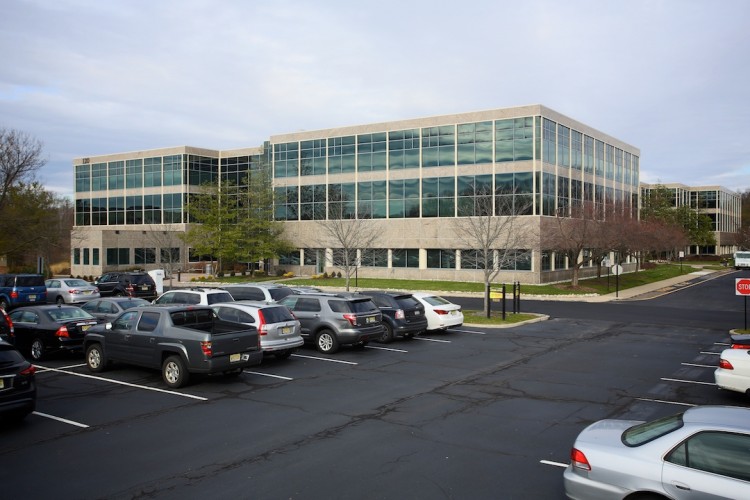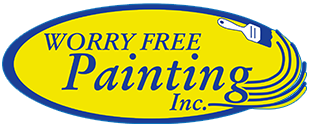- 201-666-3712
- E-mail Us
- License #13VH07929400
What is a Commercial High-Performance Coating?
How to Paint Your Deck
March 24, 2016How to Choose Paint Colors for Your Home
April 14, 2016Choosing the right paint product for a specific project can be a challenge, especially for commercial applications. These days there are quite a few spaces that fall in between what you’d consider “commercial” and “industrial.” For example, you have fitness centers, healthcare and school facilities, transportation terminals, and commercial kitchens. Standard latex wall paint won’t do – it won’t be durable enough for heavy traffic or usage, and this represents additional maintenance or reapplication costs for the client. Heavy duty industrial paint (usually used for manufacturing plants and the like) carries its own set of problems: it requires a specialized contractor with the right skills and equipment, and you have fewer options for color and sheen. Plus, it isn’t ideal for spaces seen by your customers and the general public.

Thankfully, Sherwin-Williams has a new highly advanced type of paint that is perfect to bridge the gap for these “light industrial” areas. Referred to as high-performance coatings, this type of paint is engineered for toughness while maintaining beauty. The benefits include the most popular colors and sheens, perfect and smooth finishes, and compliance with environmental standards for businesses. The best part of all is that it can be applied by standard painting contractors. You get the best of both worlds: durability and long-lasting coatings, and easy applications that end up looking fantastic.
Space Considerations
As with any paint job, the preparation of the space and substrate can be the most important factor when painting. Consider what the space will be used for, and the requirements of the high-performance coating. Generally these commercial “light industrial” spaces require protection from some combination of chemicals and cleaners, moisture, impacts, and abrasion (from highly trafficked areas). The type of substrate or surface being painted will also be a factor, as will the condition. Of course clean and dry will always be vital for proper paint adhesion and bonding between primer and topcoat – so make sure that reparations are done for cracked, stained, or otherwise compromised substrates. As a side note, there are high-performance primers available for a variety of different situations and materials that your space may contain.
Also be aware of the environmental regulations involved. While high-performance coatings are generally greener than their heavy duty industrial counterparts, they still have varying VOC and chemical emission levels. Sensitive spaces like schools and nursing home may require special consideration, but sustainability and greener construction are always good ideas anyway. Thankfully high-performance coatings offer durability that ends up outlasting standard paints, preventing waste and spent resources.
High-Performance Commercial Coatings – What Type to Choose?
Now that you have all of the considerations that your space will require, it is time to choose from the five main categories of high-performance coatings. Here are the types and a quick overview of their benefits for different applications.
Acrylic– A very popular type due to ease of application. They also offer quick drying times and less odors compared to some other coating types. Being water based, they offer low VOC levels too. Combined, these benefits make acrylics perfect for commercial applications where speed is preferred, or scheduling needs to be maintained perfectly. They also come in subset varieties like acrylic metal primers, and aesthetically attractive acrylic topcoats.
Epoxies – The most suitable for busy commercial settings, with extremely good durability and protection against moisture, abrasion, and corrosion. Sometimes requires additional mixing, and has a stronger odor when applying.
Urethanes – The best for UV and chemical resistance while still maintaining color and gloss. Generally these are used for exterior applications. You can choose a variety with even greater protection, or opt for the most long-lasting color retention – perfect for sports complexes, amusement parks, or even exterior corporate logos.
Alkyds – Dries uniformly and smoothly, while adhering very well to tricky surfaces (when prepared properly). This makes them ideal for applications such as railings, molding, trim, and columns. However, they should mostly be used indoors to protect the oil-based nature of this coating from sunlight
Hybrids – The final type is not quite one singular coating, but rather offers a combination of other types that allows you to pick and choose from the benefits of other high-performance coatings. The most common include acrylic alkyds – applies easily with low VOCs but is smooth and uniform in sheen; acrylic epoxies – durability and resistance but lower odors than standard epoxies; and urethane alkyds – great color longevity, and a sleek alkyd look.
You may think that all of these types of coatings, in their wide variety of colors with great durability, would be prohibitively expensive. The initial cost might be slightly higher than standard architectural paints, but when you consider the other expenses incurred over a coating’s lifespan, high-performance wins handily – they usually last twice as long. Also, when utilizing a commercial painting contractor, the labor is usually a higher percent of a project’s overall cost. Upgrading the coating type won’t affect that, so the overall cost doesn’t increase very much at all.
All in all, if you have a space in NJ requiring paint durability AND a professional aesthetic, it is worth considering a high-performance coating for your next commercial paint project. One of the many coating types is sure to have the precise benefits you need!

